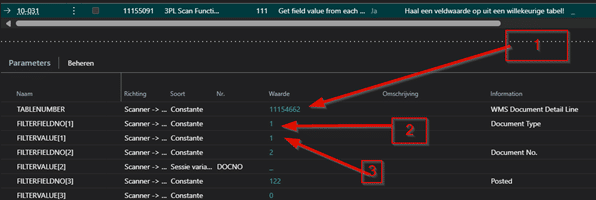Prevent performance issues in your software with filtered datasets
13 Jun 2024
3 min read
Nothing is more frustrating than being held up during your work by a slow system. Fortunately, Microsoft, Boltrics and Elevate-IT are working continuously to offer the best performance, so you can support your logistics processes without delay. But did you know that you can also take steps yourself to optimize the performance of your system? In this blog, we’re excited to share more insight into how performance problems can arise and how you can tackle them in advance.
Are you still experiencing performance issues in your software?
Despite the strong technical foundation of 3PL Dynamics, your logistics software solution may slow down over time. This is annoying. It is often caused by additional setup and data that has crept in over a long period. To the point where you really notice it. We often encounter one of two causes: too large data sets and bad filters on a data set.
In a previous blog, we showed you how to clean up large data sets. So in this blog, we will dive into the second cause and help you set up your filters correctly.
Filter scan screen functions by document type
In 3PL Dynamics, you can add a filter to your functions by document type (DOCTYPE). For example, by Inbound (1), Outbound (2), Transfer (3), Replenishment (4), or any other process in your software. Functions equipped with these filters will give your system a huge performance boost. In the video below, we will show you how to recognize these functions and how to add them easily.
Tip: To find out which number corresponds to your entry or exit process, filter the document row table by document type. To do this, open the filter by document type. Here, ‘Inbound’ is on top, which means that inbound is equal to ‘1’, followed by ‘Outbound’ (‘2’). You can also find the correct number for other tables in this way.
Exceptions in your scanning functions
There are two functions that work differently, but are no less important: #111 and #112. Do you want to optimize the performance of these functions as well? Then they are structured as follows.

1. The table number, in this case 11154660
2. The numeric value of the column we are filtering within the table. (In this case, always 1). You can always find this field on the page by using the page inspection. (see image on the right, “Ctrl+Shift+F1”)
3. The type of document we are filtering on.
Speed up your function sets & status templates
Ready for the next step? In addition to the features in your scan screens, you can also update the function sets in your status templates. From the status template, click on the ‘linked processes’ on the template.
If you remove the ‘Status’ filter and set the ‘Document Type’ filter to ‘Function Set’, you will see all the functions available in that template.

Now you can follow the same steps as for the scanning functions. Note, however, that function sets may be linked. Therefore, you must open each function set to see if there is a set in the set. Or, hoover your mouse over the feature set to see it as text:

Learn how your scan screens are built up
Do you want to learn more about the logic behind your scan screens? Take a look at our blog: ‘A glance behind the curtain: how are your scan screens built up?’







